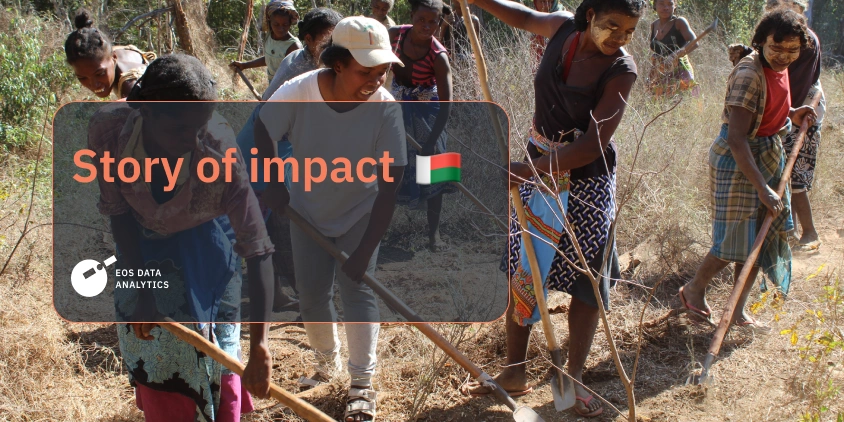
Seeds Of Hope: Madagascar’s Baobab Forest Revival
Baobabs of Madagascar look like nothing else on this earth; a wild, untamed spectacle of nature’s grand design. Their massive trunks, twisted and gnarled by the passage of time, reach skyward in a defiant display of life’s tenacity, the sight of them etching like ancient hieroglyphs against the canvas of the horizon. Yet, this awe-inspiring spectacle is now under severe threat, as escalating deforestation risks are silencing the ancient song of these arboreal giants.
As a part of the EOS Data Analytics vision to use space tech to preserve life on Earth, we continue our special stories of impact. This time, we take a close look at the problem of baobab deforestation currently taking place in Madagascar and share a glimpse of hope that there is still time, people, and will to change things for the better in the region.
Looking Into The Root Of Madagascar’s Baobab Decline
In Madagascar, the Malagasy word for “baobab” is “reniala“, translating as “mother of the forest“. This moniker reflects its central role in the island’s ecosystem and cultural heritage. With a diameter reaching up to 9 meters and a height of 18 meters, baobabs stand as towering symbols of life and endurance in the harsh, dry regions of Africa .
These unique trees are a part of the distinct ecosystems and extraordinary wildlife that has been developing on the island since it split from the African continent 160 million years ago . Recognized as a world conservation “hotspot“, Madagascar is the only home to an abundance of reptiles, mammals, and to six endemic baobab species. Among these is the world’s rarest, Adansonia perrieri, found exclusively within the confines of the Ankarana Special Reserve .
However, the significance of baobabs extends beyond the ecological. For the people of Madagascar, these trees are not just cultural symbols. They are crucial sources of food, water, and employment for the island nation – resources that are alarmingly dwindling.
But there’s one woman determined to turn this dire situation around.
Seheno Andriantsaralaza, A Voice For The Baobabs
Dr. Seheno Andriantsaralaza, a woman of vision and determination, symbolizes inspiration for the conservation of Madagascar’s iconic baobab trees. As the president of the Group of Specialists Passionate about Baobabs of Madagascar (GSPBM), she has dedicated her life to bridging the gap between research and practical application, working tirelessly to conserve baobabs and promote their sustainable use.
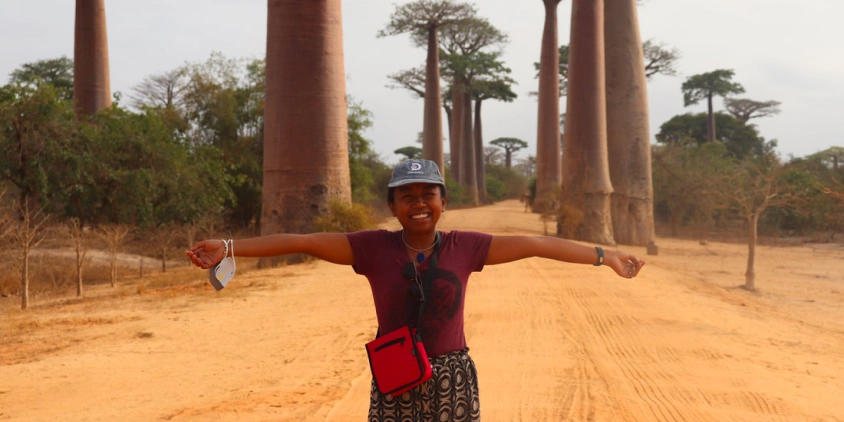
Born and raised in Madagascar, Seheno’s passion for conservation was ignited by the rich biodiversity of her homeland. She pursued her studies in the field, earning a PhD focused on baobabs. Her academic journey equipped her with the knowledge and skills to address the significant issues around the conservation and sustainable use of these majestic trees.
Today, Seheno advocates for the application of research to conservation actions. The GSPBM, established in 2019, is composed of Malagasy researchers who share Seheno’s commitment to baobab conservation.
One of the key initiatives of the group led by Seheno since January 2021 is the collaboration with the Ministry of the Environment to establish rules for the sustainable export and use of baobab fruits. Baobab fruits are edible and have potential for export, but legal issues currently prevent this. Seheno is working to ensure that any export of baobab fruits is controlled to prevent illegal exports and to secure benefits for local communities.
Seheno’s also committed to giving local communities a voice and supporting them in expressing their needs and desires, as well as promoting gender equity. In Madagascar, women working in research and conservation are rare. Seheno is working to change this, promoting gender equality and negotiating with local community groups to change the mentality that women’s place is in the kitchen.
Despite numerous challenges, Seheno’s dedication and passion for conservation shine through, especially in her latest project of revitalizing Madagascar Baobab Forests.
The Silent Struggle Of Madagascar’s Baobabs
Today, the baobab forests of Madagascar are facing a myriad of threats that are causing their decline.
Climate change, and increased dryness in particular, is the most significant one. Despite the predicted increase in habitat area for three baobab species , the current habitat for the most widespread Madagascar baobab, Adansonia za, is predicted to undergo a 40% contraction by 2070 because of climate change .
Agribusinesses practicing large-scale maize cultivation are clearing forests to make way for their crops. Other companies, often foreign, are cutting baobab forests to exploit Madagascar’s mineral resources or export baobab wood. In the meanwhile, the loss of even one tree is significant due to the long lifespan of baobabs, some of which are known to be over 1,000 years old.
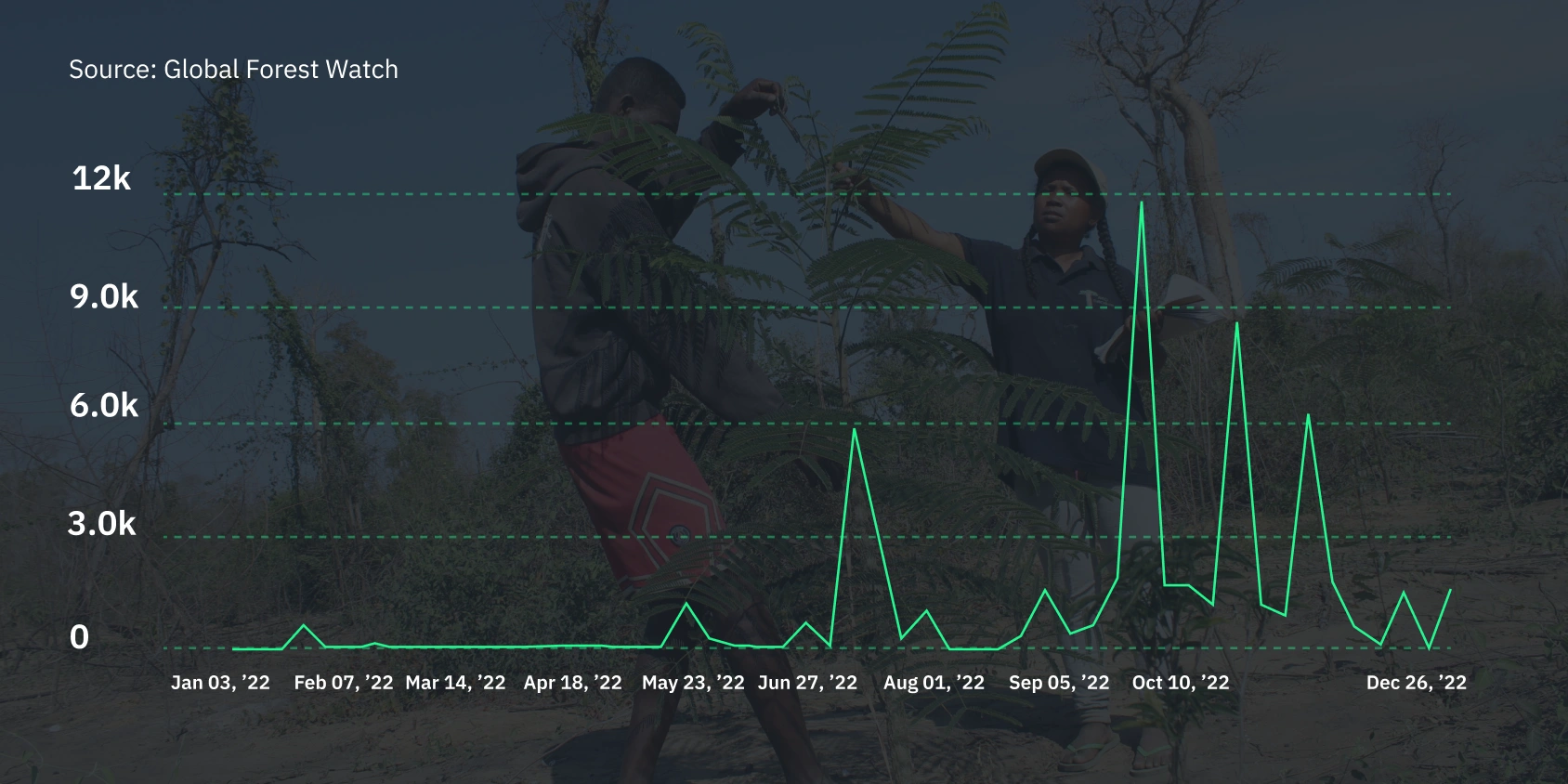
Many local farmers use fire to prepare their fields, and sometimes these fires get out of control, leading to devastating consequences for the forests and the wildlife living there. Throughout 2022 alone, at least 58,224 fire alerts had been recorded according to Global Forest Watch .
Slash-and-burn cultivators and migrants without land of their own who turn to forests to feed themselves and their families are also contributing to the deforestation of the baobab forests .
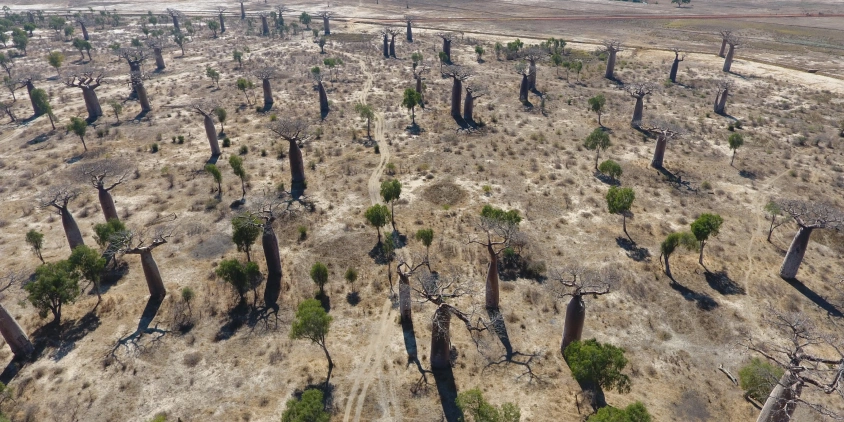
Another reason for the tree decline in Madagascar is the loss of large-bodied animal dispersers, such as giant lemurs, capable of handling and spreading the large fruits and baobab seeds . There are at least nine lemur species in northwestern Madagascar that are currently endangered because the cover of the forest they live in declined from 17.5% to 9.3% within the last 30 years .
Existing animals are too small to manage these tasks, posing a significant obstacle to natural reforestation efforts. This has led to the phenomenon where many native plants and trees, including baobabs, are now considered “orphans” due to the absence of suitable dispersers. Consequently, this has also endangered various lemur species in northwestern Madagascar, further exacerbating the issue.
The loss of the baobab forests has far-reaching consequences not only for the biodiversity of the region but also for local communities that depend on these forests for their livelihoods. Often, they live in extreme poverty, and cutting down the forests nearby might be their only way to earn money, and they can’t be blamed for that.
All in all, baobab deforestation in Madagascar is a complicated issue with many different factors at play. But one GSPBM project might make positive changes in the process.
Beneath The Canopy Of Baobab Reforestation Efforts
In April 2021, GSPBM initiated a project to revitalize the baobabs of Madagascar in Andranopasy. Seheno Andriantsaralaza, its leader, aims to restore the baobab forests through women’s leadership and community engagement.
The project began with the establishment of two nurseries, housing 50,000 native forest trees. The baobabs must be at least two years old to survive transplantation, and during these two years, they should be watered and fertilized on a daily basis.
After rigorous preparations together with local communities, the transplantation of several thousand seedlings took place in February 2023. A team of 300 people was working for two days, with each person planting around 100 seedlings.
According to our latest vegetation survey, the survival rate of transplanted seedlings is around 75%, which is more than we initially forecasted. This is a very good start for the baobabs, considering that it takes at least 50 years for a baobab seedling to grow into a tree that bears fruit.
In terms of density, Seheno’s team found that one hectare of land can contain eight baobabs, which is significant enough given their size. They also want to determine if leaving 20% of baobab fruits on the ground for seed dispersal will be sufficient for the baobabs to regenerate.
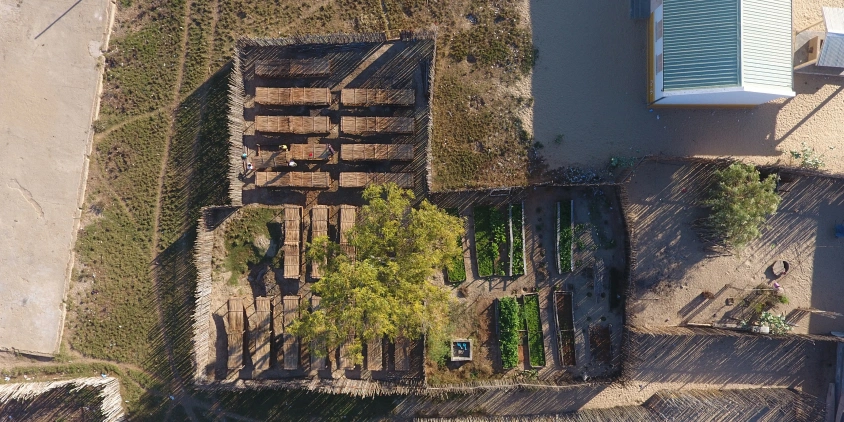
The other nursery will be handed over to a local community group, which will be provided with the equipment and materials necessary to transplant the seedlings into the forest without GSPBM oversight.
These nurseries are maintained by providing soil fertilizers and watering the seedlings daily. In a similar way, the seedlings are nurtured until they reach two years of age, at which point they are transplanted into the forest. Since this process is labor-intensive, it requires the participation of the local community.
Observing Baobab’s Slow Bloom Through A Satellite Lens
As a global provider of AI-powered satellite data analytics, EOS Data Analytics is always eager to apply its remote sensing technologies to pressing environmental issues. When we learned about the efforts to revitalize the baobab forests of Madagascar, we decided to see if the insights provided by our platforms could be of help.
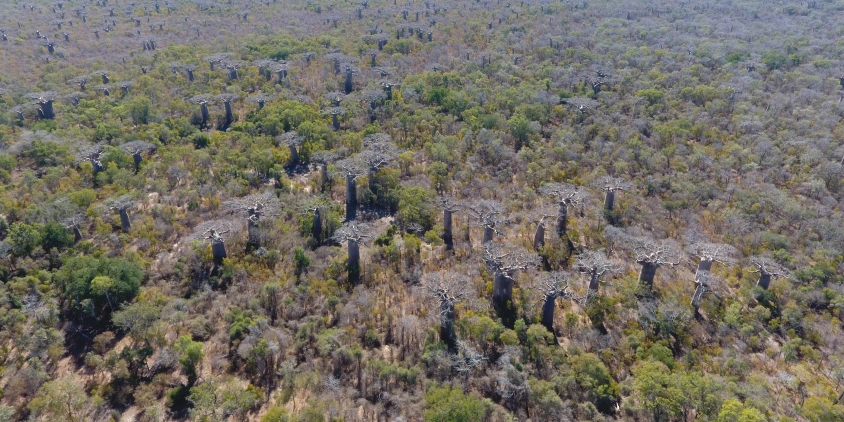
It’s important to note that our research has several limitations.
Baobabs grow very slowly, and the best way to track their dynamics is to compare the state of vegetation in a span of one or more decades. Furthermore, in Madagascar, baobabs grow among other trees, so tracking deforestation caused by fires or logging requires creating a custom machine learning model able to recognize and count baobabs in such forests.
The current project was initiated in 2021, and the seedlings were transplanted in February 2023, months before this publication went online, so their growth progress is too small to track or base a machine learning model on.
Despite these limitations, our tools can still provide valuable insights as they go far beyond the idea of looking at fields from space. For instance, EOSDA Crop Monitoring, an online satellite-based digital agriculture platform for field monitoring, can analyze various indices and parameters that provide a more nuanced understanding of the state of vegetation. So we decided to utilize it when studying the field site in the Andranopasy baobab forest where baobab seedlings were transplanted.
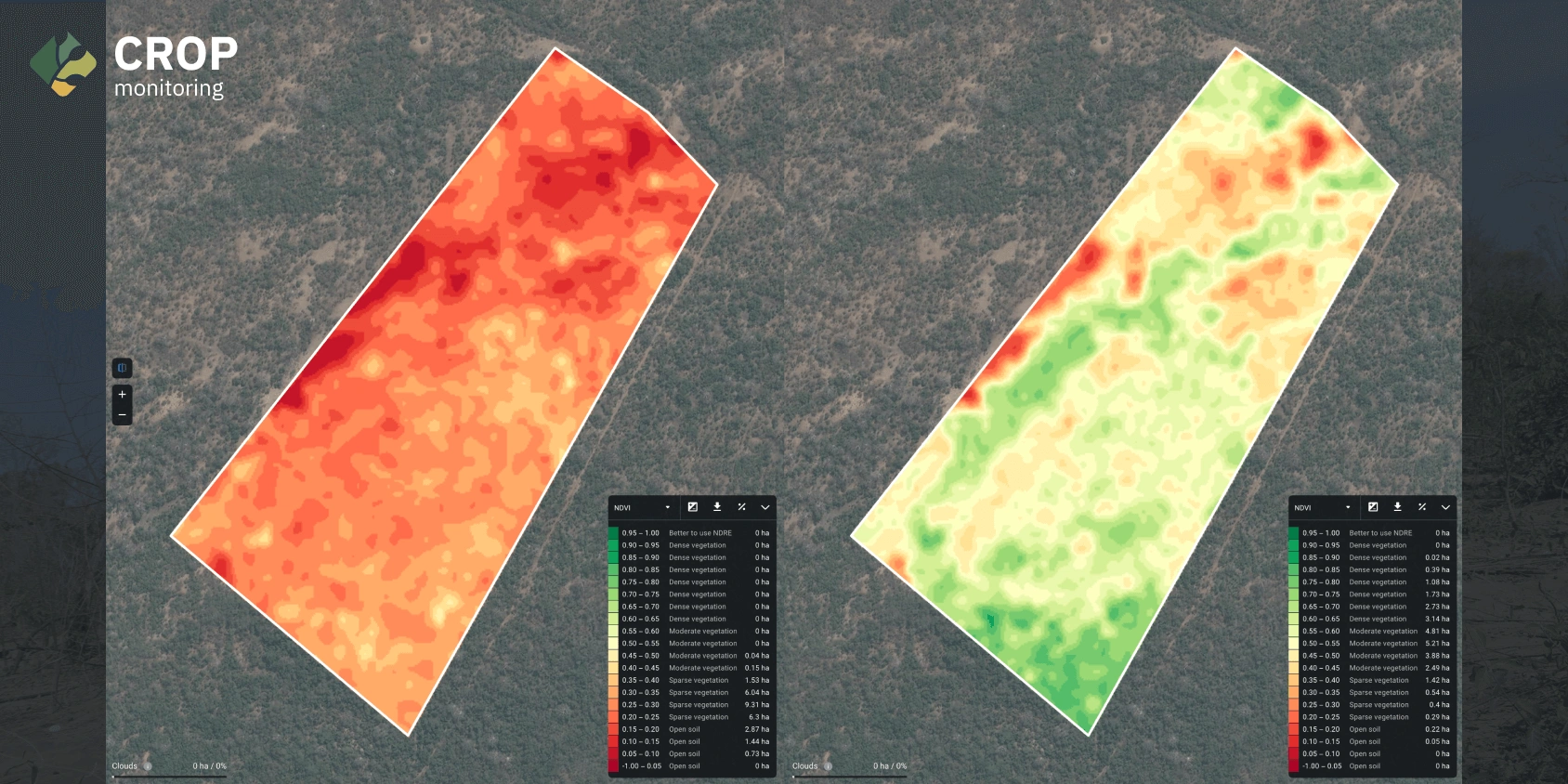
For this area, we have five years of historical data. This data reveals that prior to 2023, the vegetation in this area was always very scarce in mid-July. Based on weather data, the precipitation and temperatures during those years were normal, suggesting that this field may have suffered fires or logging years ago but not extreme droughts and unusual lack of precipitation.
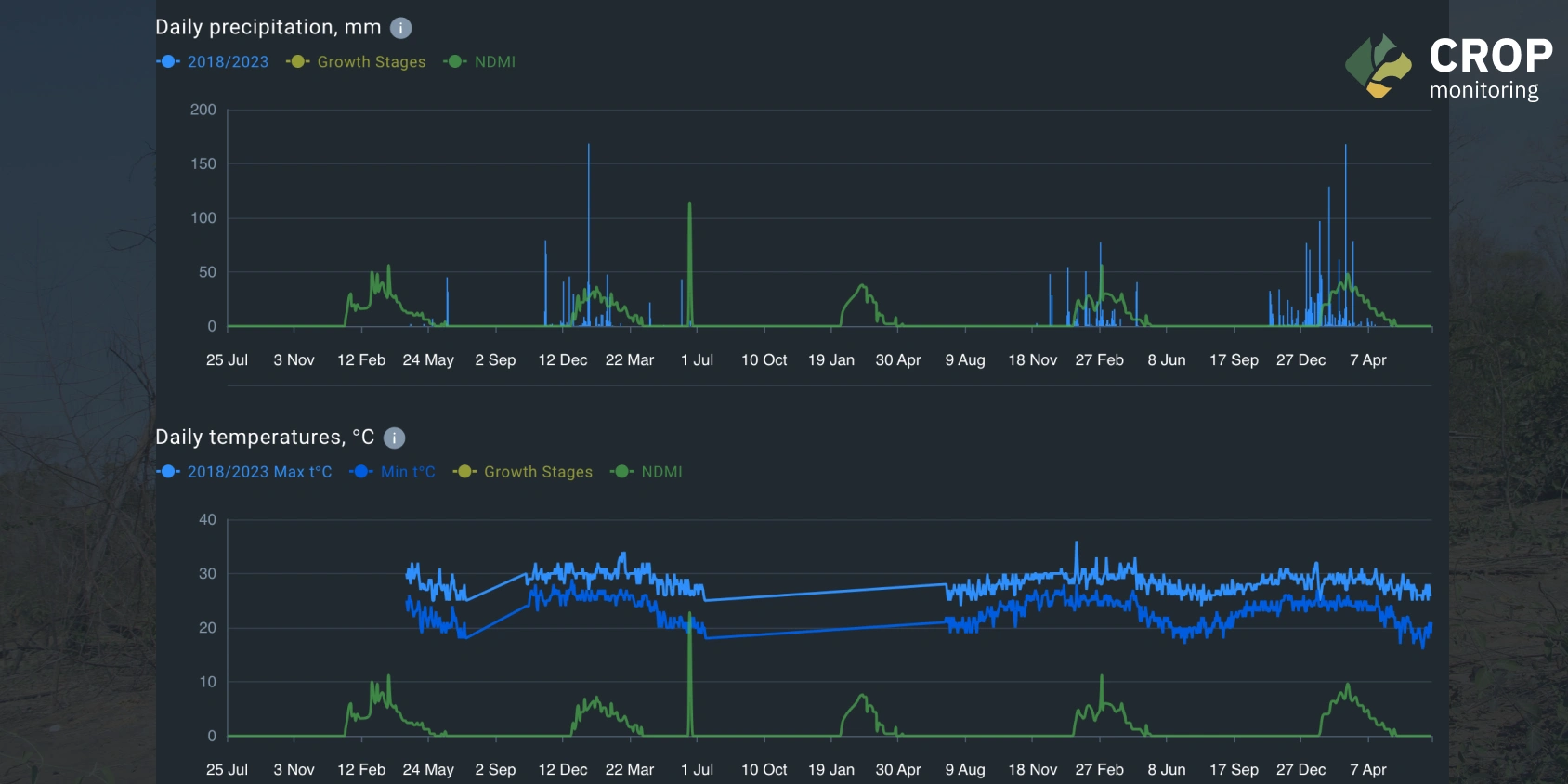
However, the situation changed dramatically in 2023. Now, the Normalized Difference Vegetation Index (NDVI), the key vegetation index revealing the health of plants and trees in the area, shows positive dynamics for the first time. This must be the effect of the baobab seedlings.
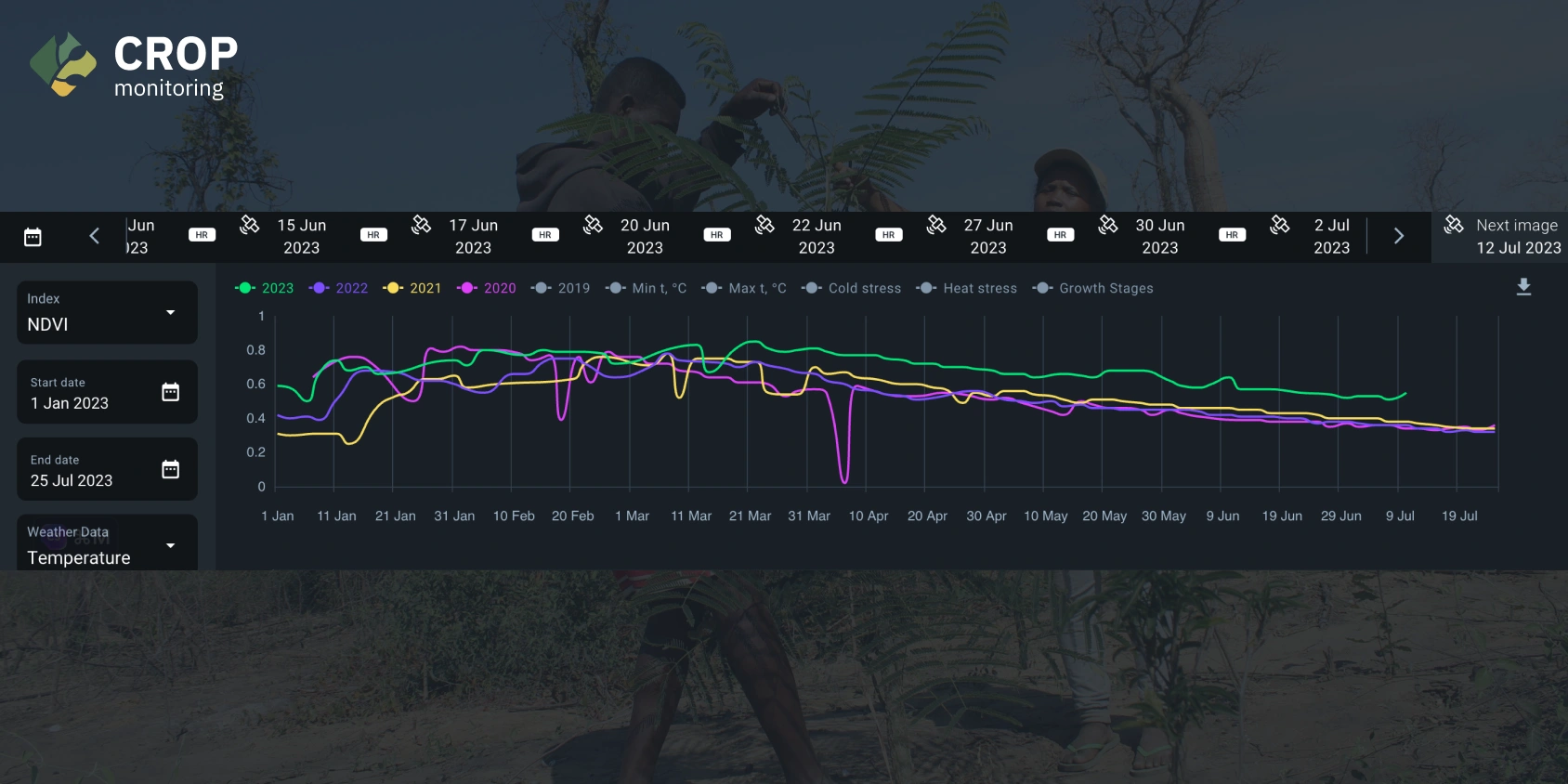
If baobab seedlings are capable of such an effect within months after transplantation, the positive effects on biodiversity might arrive much faster. The reason for this is that the presence of baobabs can create a microclimate that favors the growth of other plant species.
Baobabs, with their large trunks and extensive root systems, can store water and nutrients, releasing them slowly and providing a stable supply for other plants in the vicinity. This can lead to an increase in plant diversity and density in a relatively short time. Furthermore, baobabs can provide shelter and food for a variety of animal species, contributing to the overall biodiversity of the area.
Our findings suggest that the transplantation of baobab seedlings can lead to significant improvements in vegetation and moisture indices in a relatively short time, indicating a rapid positive effect on local biodiversity.
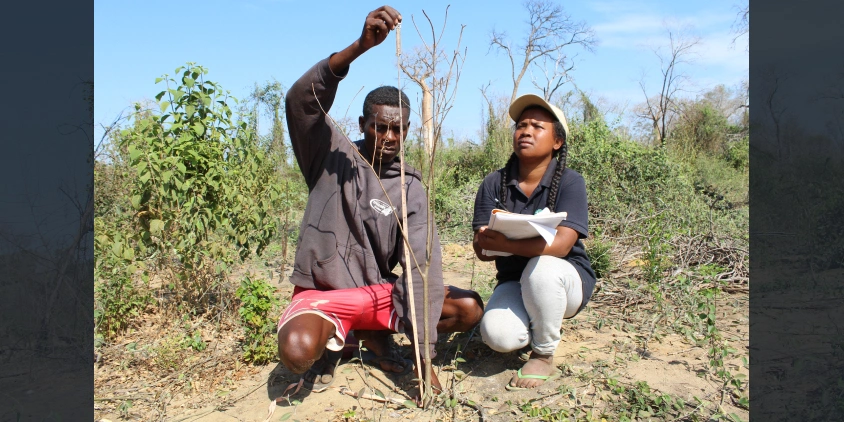

These insights underscore the importance of conservation efforts like the one led by the GSPBM in Madagascar. Their efforts are crucial not just for the long-term preservation of the environment, but also to address immediate, short-term challenges.
Harnessing Passion And Science For Baobab’s Return
Seheno Andriantsaralaza’s efforts to revitalize the baobab forests of Madagascar are nothing short of inspiring. Her project, which has already shown positive short-term effects, holds the potential to transform the natural and economic landscape of Madagascar in the coming decades. The successful transplantation of baobab seedlings, coupled with the empowerment of local communities and the promotion of sustainable use of natural resources, demonstrates the power of conservation efforts grounded in scientific research and community engagement.
Driven by the vision to make space tech a driver of sustainability on Earth, EOS Data Analytics believes that science and technology, when used responsibly, can be a powerful tool for promoting sustainability and protecting our planet. Seheno’s project aligns perfectly with this vision. By leveraging scientific research and local knowledge, she is using the tools at her disposal to create a sustainable future for Madagascar’s baobab forests.
The work being done by Seheno and her team is a shining example of the kind of initiatives that give us hope for the future. With such people at the helm, the Earth is bound to become a better place for generations to come.
The story of Seheno and the baobab forests of Madagascar shows how the synergy of modern science, care about the future, and inner human passion can have a multiplying effect. It reveals that when we combine the latest groundwork with a deep respect for nature and a commitment to sustainability, we can create solutions that not only address immediate challenges but also pave the way for a healthier, more sustainable future both for nature and for humanity.
And that is something worth striving for.
This Story of Impact is created following EOSDA’s vision to make space tech a global driver of sustainability on Earth. If you wish to share a story that relates to this idea and believe our solutions can help develop it, please contact us via pr@eosda.com.
About the author:
Maksym Sushchuk is at the forefront of realizing EOSDA's vision to make space tech a global driver of sustainability on Earth. He has over 15 years of experience in journalism and content creation for prominent Ukrainian startups, charitable funds and ESG businesses. As Head and Co-founder of PR Army Maxim brings attention to the human and social tolls of the aggression against Ukraine.
Recent articles

Analyze 2025 & Plan Your Best Year Yet: LandViewer Christmas Offer
It’s the most wonderful time of the year! The Christmas holidays are here, and so is your chance to analyze 2025 and plan a prosperous 2026 with more affordable Pro plans in LandViewer.

EOSDA Models Climate Change Impact On Sugarcane Yields
EOSDA modeled future temperature, rainfall, and other climate impacts on Veracruz sugarcane. The results help growers plan long-term adaptation strategies, including timing, varieties, and irrigation.

EOSDA LandViewer Black Friday Sale: Exclusive Offers & Giveaway
This Black Friday, LandViewer offers new users the chance to save on monthly plans, get extra months with yearly subscriptions, and participate in a free annual plan giveaway.